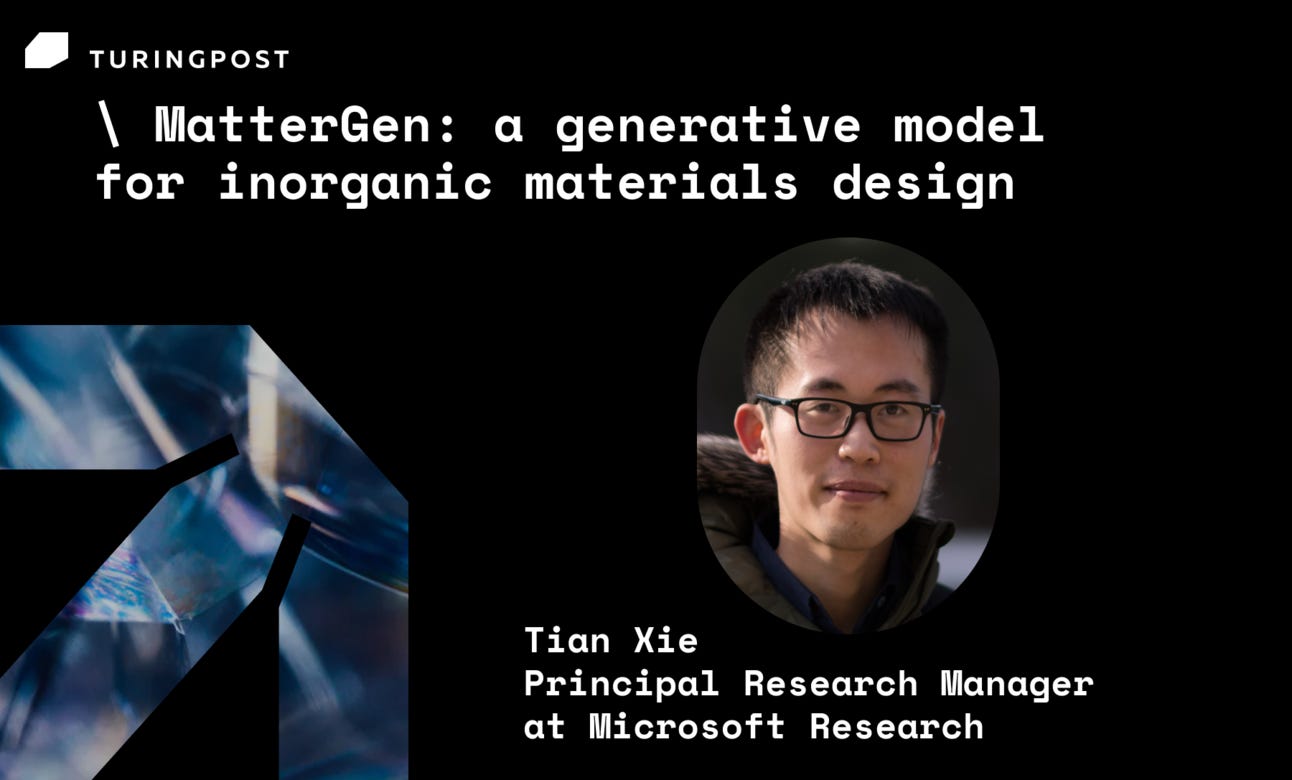MatterGen's Breakthroughs: How AI Shapes the Future of Materials Science
Tian Xie from Microsoft Research talks about the transformative power of AI in material science and the future of sustainable technologies
In January 2024, Microsoft Research published a paper on MatterGen: a generative model for inorganic materials design. This model employs diffusion modeling, similar to how models like DALL-E generate images, but it generates novel and potentially stable inorganic material structures. Unlike previous models, it focuses on generating materials likely to be synthesizable. MatterGen can also be fine-tuned to create materials with specific desired properties, such as specific chemistry, symmetry, or electronic/magnetic characteristics. This opens up the potential to accelerate the discovery of new materials for use in energy solutions, catalysis, and advanced technology. We invited Tian Xie, Principal Research Manager at Microsoft Research, to talk more about MatterGen and his views on the role of AI in the future of sustainable technologies.
What led you to the intersection of deep learning and materials discovery? What was the moment of epiphany when you realized the potential of AI in this field?
When I started my PhD, AlphaGo had just come out and beaten the Go world champion Lee Sedol. I was deeply impressed because I know mastering Go requires years of training to gain a human intuition. It is similar to designing new materials, which still largely depends on a materials scientist’s intuition gained from years of experience. This was the moment of epiphany for me to realize that AI will have a major impact in materials design in the coming years. It prompted me to choose AI for materials design as my PhD topic, even though at that time very few around the world were working on this.
MatterGen represents a significant leap in materials design, akin to the evolution seen in generative AI for text and images. What inspired its creation, and what specific challenges in materials science does it aim to address?
The traditional approach to materials design is based on screening a limited set of known materials and filtering candidates satisfying the design requirements for specific applications. However, the size of known materials is only around 10 to the 5th, a tiny portion of hypothetical material space of at least 10 to the 10th to 10 to the 12ve. MatterGen was created to explore this significantly larger hypothetical material space by generating novel materials directly guided by a broad set of design requirements. It enables the discovery of more diverse and better-performing materials than those that could be found via screening.
MatterGen operates as a diffusion model, a term more commonly associated with image generation. Can you explain in layman's terms how this model works in the context of generating materials with desired properties?
During the training, MatterGen takes the 3D structure of known materials and iteratively adds noise to corrupt its atom types, position, and periodic lattice to approach a random structure. Then, it trains a score network to denoise the corrupted 3D structure to its original structure. During the generation, MatterGen samples a random structure and iteratively applies the scoring network to generate a novel structure. You can also train individual conditional score networks to guide the generation towards materials satisfying different conditions, like electronic, magnetic, and mechanical properties, chemical elements, and symmetry.




